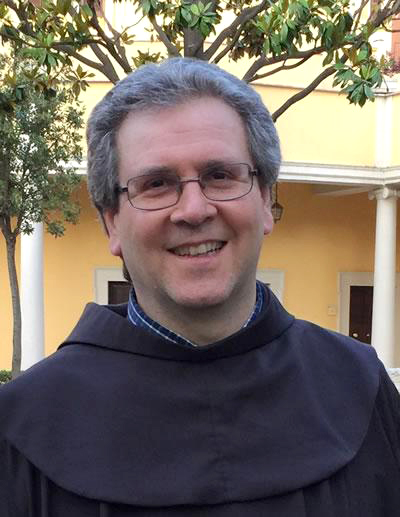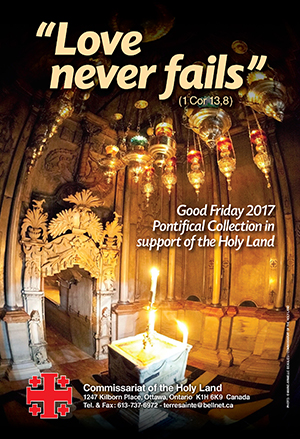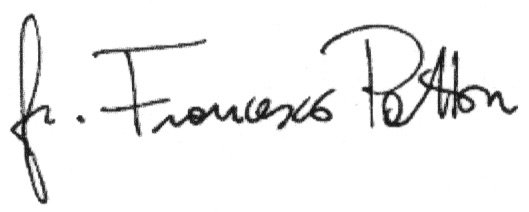Dear brothers and sisters:
May the Lord grant you his peace!

This year is truly special for Franciscans of the Holy Land as we are celebrating the eighth centennial (1217-2017) of our presence in these Holy Places. The Church herself has put us in charge of their upkeep and asked that we look after the local community, while being further mandated to offer ourselves up as bridges of peace. This year the grace of celebrating Easter in the fully restored Edicule of the Tomb of the Holy Sepulchre is granted to us, thanks to the collaboration with our brothers of the Greek Orthodox Church and the Armenian Orthodox Church. So I wish to bring to your attention the value and the meaning of this place which is absolutely the most important for all Christians of the world and a key site to interpret our lives and our history.
The Holy Sepulchre is first and foremost where the Lord Jesus partook in our existence till the very end, entering into the mystery of death that seems to contradict the very meaning of our lives. Once anointed with scented oils and wrapped in a shroud, Jesus was laid to rest in a tomb dug out of a stone and, like a seed, he was deposited deep in the ground. The physical location that retains the memory of his burial testifies that the incarnation of the Son of God is so real, so complete and all encompassing that it goes so far as to include the experience of death, which is the final experience of every human existence.
The Holy Sepulchre is mostly that place where death was vanquished. When Mary Magdalene comes to the tomb, on Easter morning, she finds it empty. Peter and John discover the same after having raced to the tomb and, out of breath, peered inside. This place is important to us because that very first Easter morning has become a sign that testifies, in a physical mode, that death has been vanquished. The empty tomb is a wordless yet eloquent testimonial of this event. The empty tomb is the place where a new world began, even physically speaking, in that instant of light where Jesus is resurrected.
This is why this place, this very spot where the Resurrection of the Lord Jesus happened, is also the foundation of our faith and of our hope. We would like to see right away the plenitude of the world’s renewal. We long to see this world and humankind find peace and we have no greater desire than to see humankind rid of borders and experience universal brotherhood. But instead our hand, groping in the dark, feels that walls and barriers, weapons held menacingly, hearts filled with hatred and preachers of violence continue to prevail over peace.
 The experience of the empty tomb however teaches that we must learn to discern the signs that the Lord brings to our attention so as to sense in them the power of his Resurrection. My heart goes out to so many children of all faiths, including those of Aleppo, who, over the last few months, have responded to the invitation to pray for peace. My heart also goes out to the children of our schools in the Holy Land, both Christian and Muslim, who are growing up side by side and getting to know and respect one another, all the while embracing in friendship so as to be the seedlings a different future. I put hope in the initiatives of dialogue, of sharing and social commitment that brings together Jews, Christians and Muslims and who, together, represent no more than a seed, yet holding the very real possibility of entering into meaningful relationships beyond community boundaries. I am further heartened by the ecumenical dialogue that has become more cordial and fraternal these last few years in the Holy Land, between the leaders of the different Churches and their faithful.
The experience of the empty tomb however teaches that we must learn to discern the signs that the Lord brings to our attention so as to sense in them the power of his Resurrection. My heart goes out to so many children of all faiths, including those of Aleppo, who, over the last few months, have responded to the invitation to pray for peace. My heart also goes out to the children of our schools in the Holy Land, both Christian and Muslim, who are growing up side by side and getting to know and respect one another, all the while embracing in friendship so as to be the seedlings a different future. I put hope in the initiatives of dialogue, of sharing and social commitment that brings together Jews, Christians and Muslims and who, together, represent no more than a seed, yet holding the very real possibility of entering into meaningful relationships beyond community boundaries. I am further heartened by the ecumenical dialogue that has become more cordial and fraternal these last few years in the Holy Land, between the leaders of the different Churches and their faithful.
The mere sight of the empty tomb however is not enough to detect in our time the power of the Resurrection. Its contemplation in faith is needed. Catching a glimpse of those scattered seeds of hope sowed by the Lord requires the very same faith, even here in this Holy Land, as in all the parts of the world, once we have cast away the fear of being branded as naive.
This is why I wish each and everyone the opportunity at Easter to partake in the experience of Mary Magdalene, of Peter and John and so participate in the discovery of those signs, as elusive as they may be, that allow to believe that Jesus has risen, that he is the Lord and that, in spite of appearance to the contrary, he sets the course of history and leads humanity to that fullness of life in Him.

Friar Francesco Patton, OFM
Custos of the Holy Land in Jerusalem
Holy Friday 2017